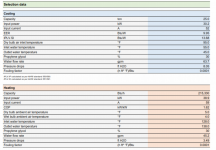Hi, I am using software to do the voltage drop.
In the riser, there is chiller. I know the original engineer use MCA to calculate the load for chiller.
The question come to me is: is chiller a motor?
I have transformer at the line side upstream of chiller.
let us assume chiller MCA is 90A
If I treat chiller load as a normal load, then I show load as 90*460*1.732=71704.8VA.
compare with i treat chiller as a motor about 72HP.
They pull similar amp on feeder, however, motor cause bigger voltage drop on upstream transformer.
chiller as regular load, transformer voltage drop is : 0.5%
chiller as motor, transformer voltage drop is 1.2%
Now question is : is chiller a motor? it contains motors, but is it a motor?
In the riser, there is chiller. I know the original engineer use MCA to calculate the load for chiller.
The question come to me is: is chiller a motor?
I have transformer at the line side upstream of chiller.
let us assume chiller MCA is 90A
If I treat chiller load as a normal load, then I show load as 90*460*1.732=71704.8VA.
compare with i treat chiller as a motor about 72HP.
They pull similar amp on feeder, however, motor cause bigger voltage drop on upstream transformer.
chiller as regular load, transformer voltage drop is : 0.5%
chiller as motor, transformer voltage drop is 1.2%
Now question is : is chiller a motor? it contains motors, but is it a motor?


